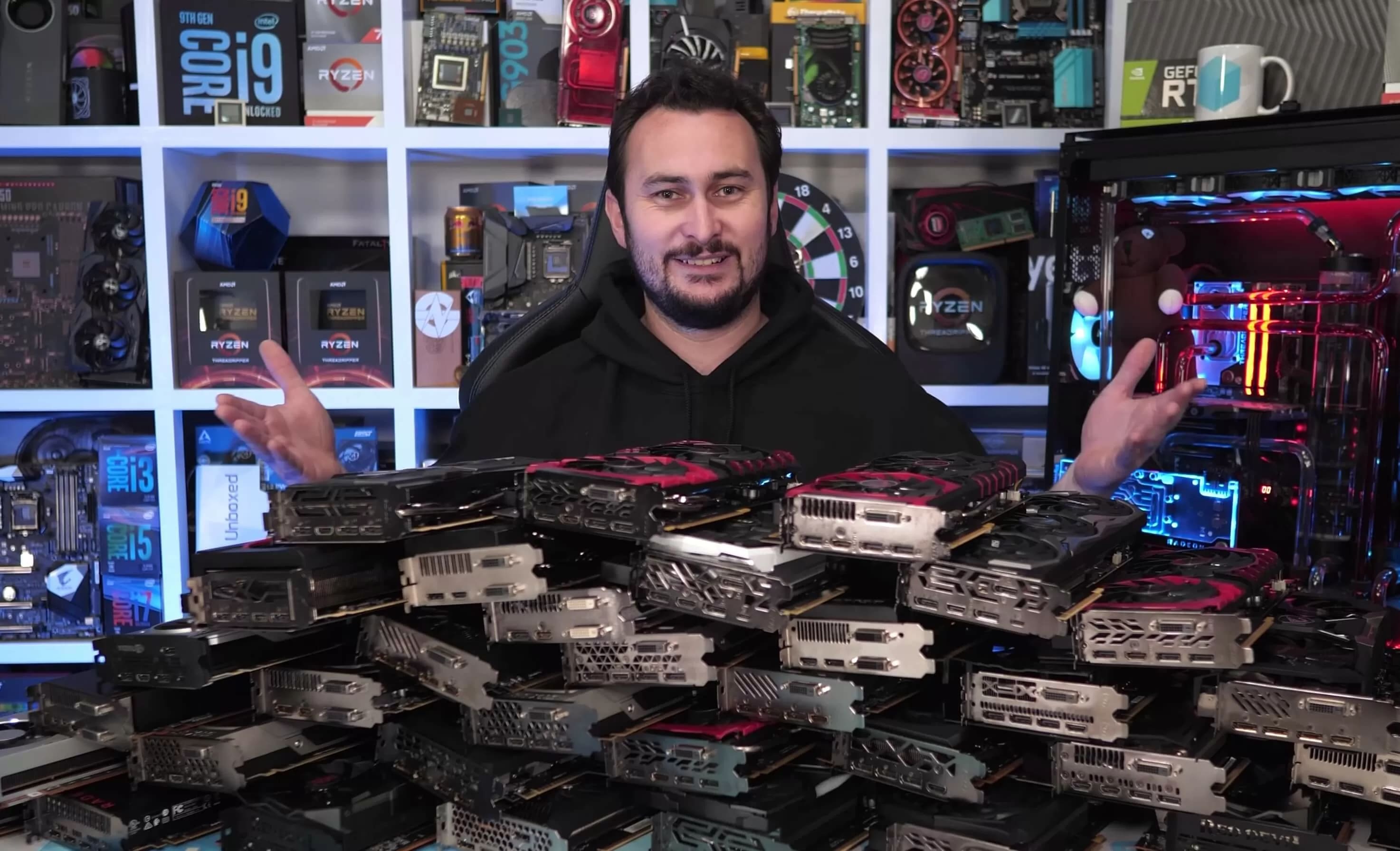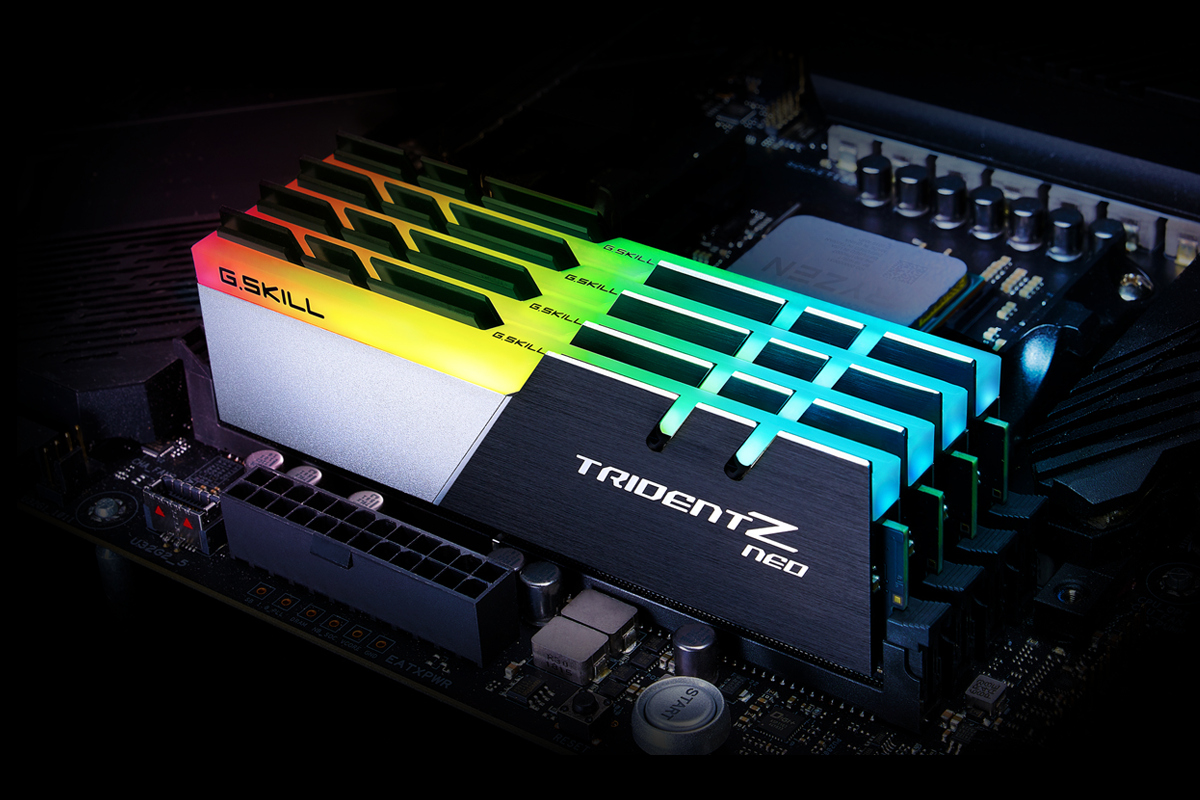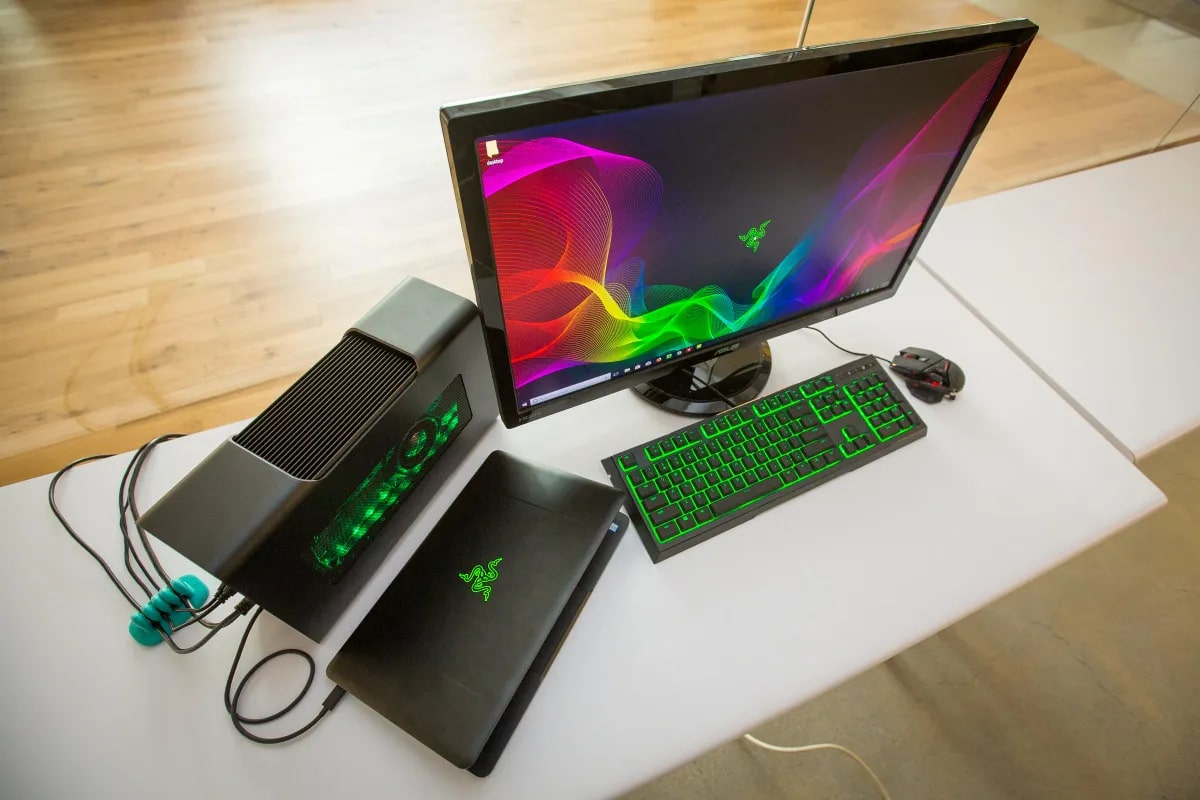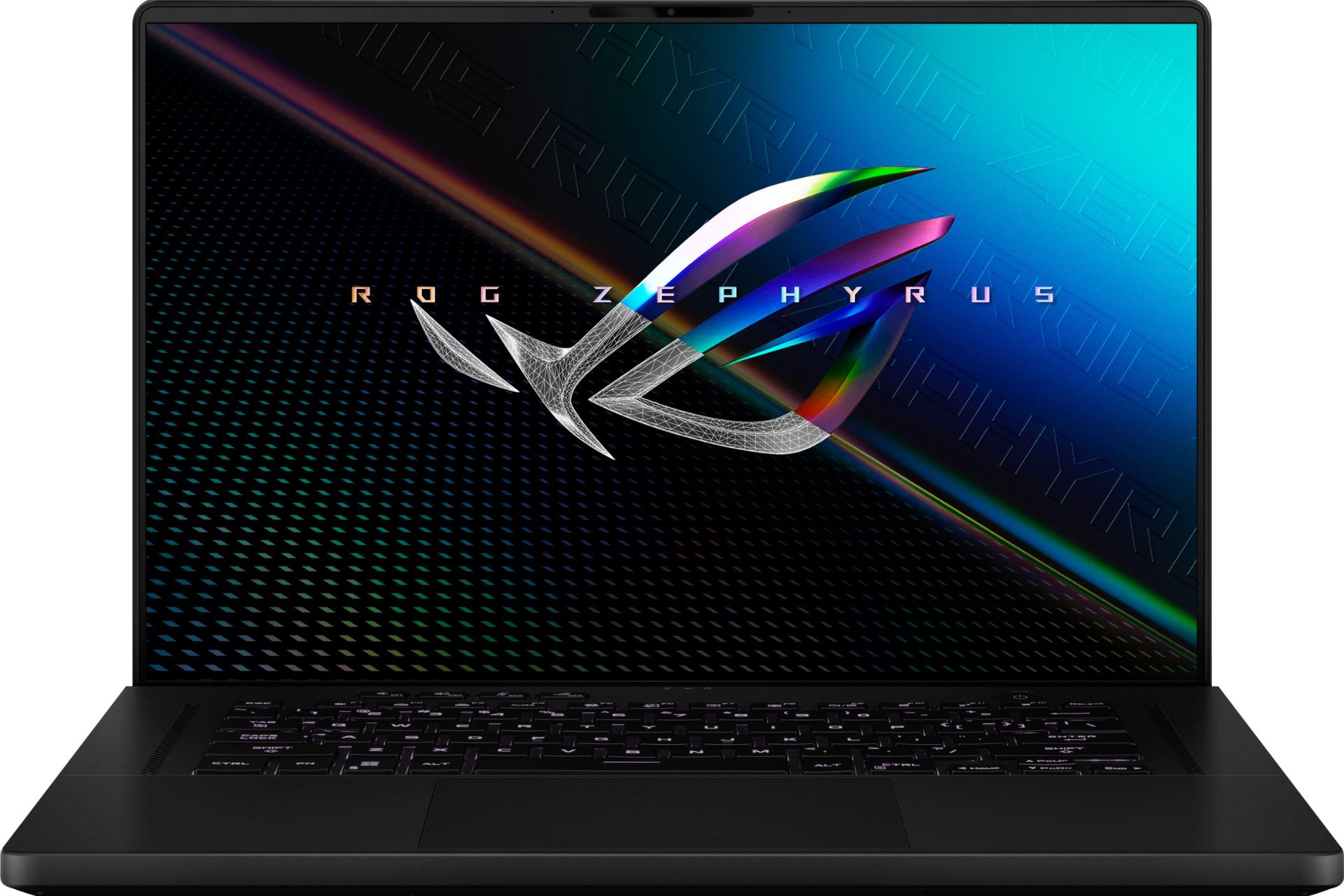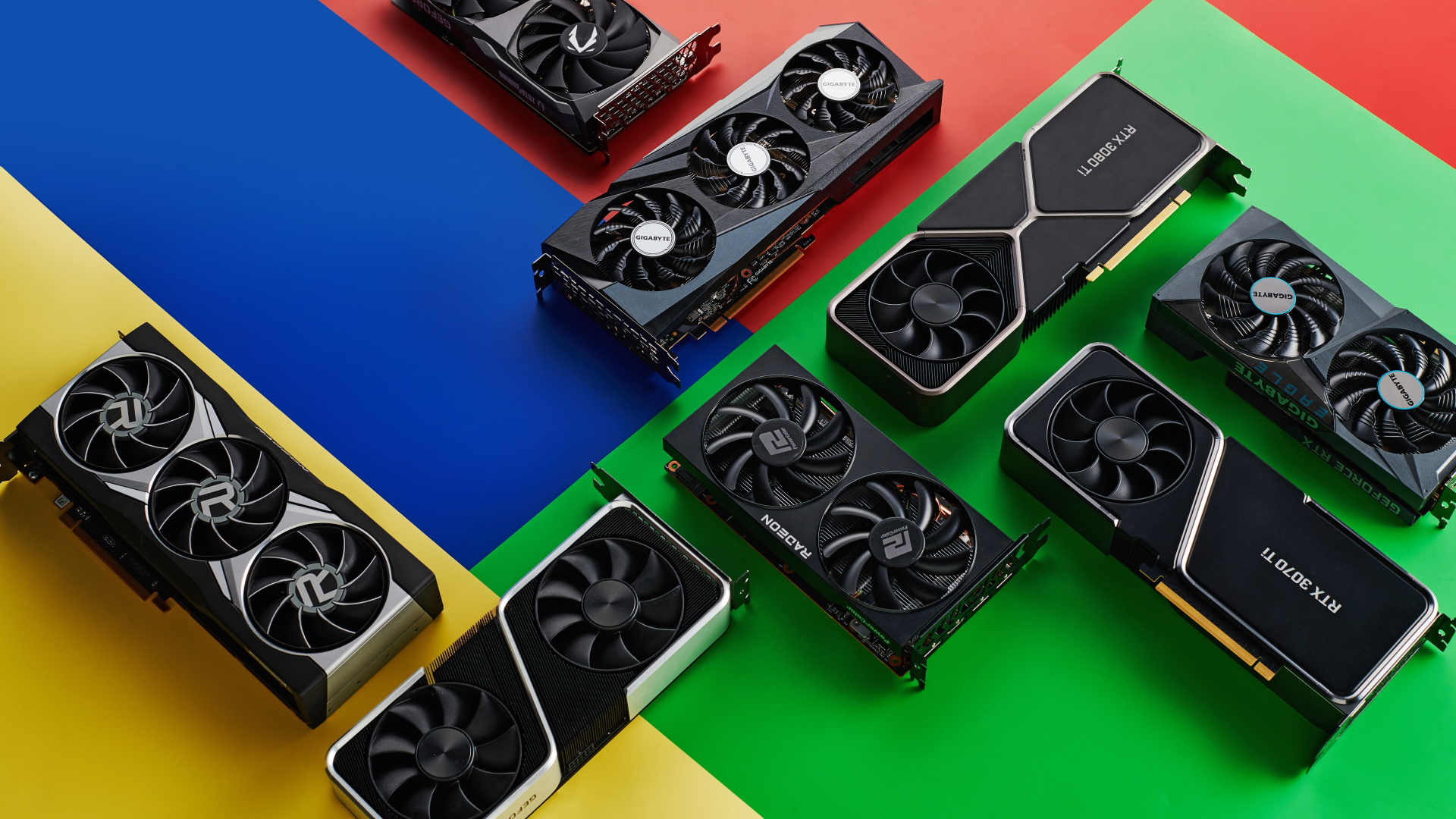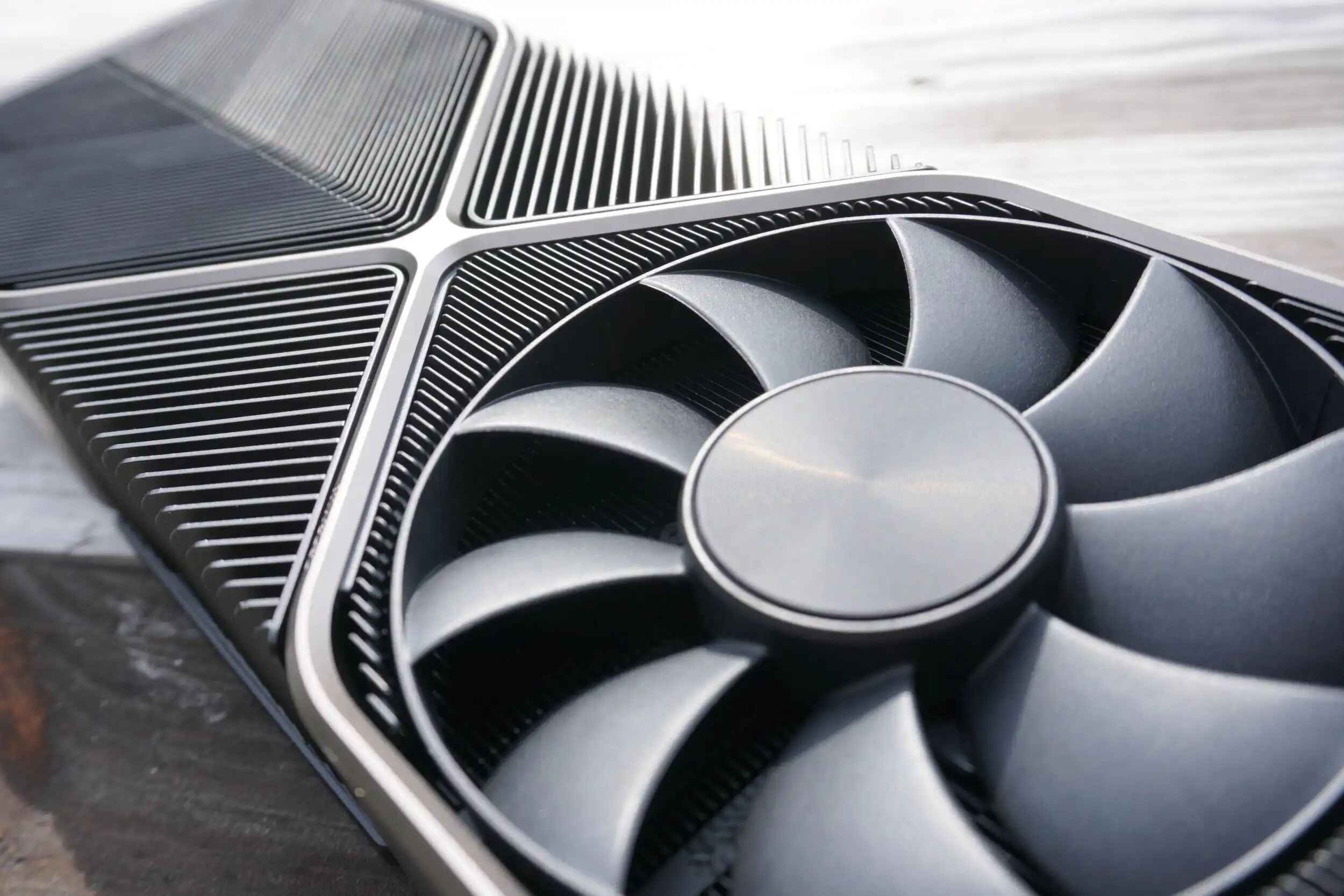Introduction
When it comes to upgrading or building a new computer, one component that often takes center stage is the graphics card. A graphics card, also known as a video card or GPU (Graphics Processing Unit), is an essential hardware component responsible for rendering images, videos, and animations on your computer screen.
With advancements in technology, graphics cards have become crucial not only for gamers but also for professionals in fields such as graphic design, video editing, and 3D modeling. They can significantly impact the visual quality, performance, and overall user experience of your system.
However, with a plethora of options available in the market, choosing the right graphics card can be a daunting task. From compatibility with your system to performance and budget considerations, there are several factors to evaluate before making a purchase decision.
In this article, we will explore the key factors you should consider before buying a graphics card. Whether you’re a casual gamer looking to upgrade your gaming experience or a professional seeking top-notch performance, this guide will help you make an informed choice that best suits your needs and preferences.
Factors to Consider Before Buying
Before diving into the various technical aspects of graphics cards, it’s important to consider a few overarching factors that will guide your decision-making process. These factors will help narrow down your options and ensure that you choose a graphics card that meets your specific requirements.
- Compatibility: The first factor to consider is the compatibility of the graphics card with your computer system. Check the specifications of your motherboard to ensure that it has the necessary expansion slots, power connectors, and compatible drivers for the graphics card you intend to purchase.
- Performance: Assess your performance needs and determine the level of graphics performance required for your intended usage. Whether you’re a casual gamer, a professional designer, or a content creator, understanding your performance requirements will help you choose a graphics card that can handle the demands of your applications.
- Budget: Set a budget for your graphics card purchase as prices can vary significantly. Determine how much you’re willing to invest and strike a balance between performance and price. Consider your long-term needs and evaluate the value for money offered by different options.
By considering these factors before delving into the technical details, you can streamline your decision-making process and focus on graphics cards that are compatible, offer the desired performance, and fit within your budgetary constraints. Now, let’s explore the specific aspects to look for when buying a graphics card.
Compatibility
Compatibility is a crucial factor to consider when buying a graphics card. Ensuring that the graphics card is compatible with your computer system is essential to avoid any compatibility issues and maximize its performance. Here are some key aspects to assess:
- Motherboard Compatibility: Check the specifications of your motherboard to determine which expansion slots it supports. Common types include PCI Express (PCIe) x16, PCIe x8, and PCIe x4. Ensure that your motherboard has the appropriate slot for the graphics card you plan to purchase.
- Power Supply: Graphics cards require power to operate, so it’s important to ensure that your power supply unit (PSU) can provide sufficient power to the graphics card. Look for the recommended power supply wattage in the graphics card’s specifications and ensure that your PSU meets or exceeds that requirement.
- Physical Space: Consider the physical dimensions of the graphics card and the available space in your computer case. Some high-end graphics cards can be quite large and may not fit in smaller cases. Measure the available space and check the maximum card length specified by the manufacturer to ensure a proper fit.
- Operating System and Driver Support: Check if the graphics card is compatible with your operating system. Most modern graphics cards support popular operating systems like Windows, macOS, and Linux. Additionally, ensure that the graphics card has up-to-date drivers available for your specific operating system to ensure proper functionality.
By verifying the compatibility of the graphics card with your motherboard, power supply, physical space, and operating system, you can ensure a seamless integration into your computer system. Always refer to the manufacturer’s specifications and documentation to confirm compatibility before making a purchase.
Performance
When it comes to graphics cards, performance is a critical aspect to consider. The performance of a graphics card determines how well it can handle demanding tasks such as gaming, rendering, and video editing. Here are some key factors to evaluate:
- GPU (Graphics Processing Unit): The GPU is the heart of a graphics card and plays a significant role in determining its performance. Look for a graphics card with a powerful and efficient GPU that can handle the specific tasks you have in mind.
- Core Clock and Boost Clock: These clock speeds indicate the frequency at which the GPU operates. Higher clock speeds generally result in better performance. Consider the core clock and boost clock speeds when comparing different graphics cards to assess their performance capabilities.
- Memory: Graphics cards have dedicated memory known as VRAM (Video Random Access Memory). The amount of VRAM affects the card’s ability to handle high-resolution textures and complex scenes. For intensive tasks such as gaming or 3D rendering, opt for a graphics card with ample VRAM.
- Memory Bandwidth: Memory bandwidth determines the speed at which the GPU can access and transfer data from VRAM. A higher memory bandwidth allows for faster data transfers, resulting in smoother performance, especially in graphically demanding applications.
- CUDA Cores (NVIDIA) or Stream Processors (AMD): These are parallel processing units that handle complex calculations and tasks. The more CUDA cores or stream processors a graphics card has, the better its performance in tasks that utilize parallel processing, such as rendering or AI computations.
- Graphics APIs and Software Support: Consider the graphics card’s compatibility and performance in various graphics APIs (Application Programming Interfaces) such as DirectX, OpenGL, and Vulkan. Additionally, ensure that the graphics card is supported by the software applications you intend to use.
When evaluating performance, it’s essential to align your requirements with the specifications and capabilities of the graphics card. Consider the demands of your intended applications and choose a graphics card that can deliver the necessary performance to meet your needs.
Budget
When purchasing a graphics card, it’s crucial to establish a budget to guide your decision-making process. Graphics card prices can vary significantly depending on their performance capabilities and features. Here are some points to consider while determining your budget:
- Decide on an Upper Limit: Determine the maximum amount you are willing to spend on a graphics card. This will help narrow down your options and prevent you from overspending.
- Consider Your Requirements: Assess your needs and prioritize the features and performance levels that are important to you. High-end graphics cards may come with more advanced features and robust performance but at a higher cost. Evaluate whether these features are necessary for your specific usage.
- Long-Term Investment: Consider the longevity of your graphics card purchase. High-end graphics cards with cutting-edge technologies may have better future-proofing, but they also come at a premium. Balancing your current needs with future compatibility and performance requirements is essential.
- Value for Money: Evaluate the overall value provided by a graphics card based on its performance, features, and price. Compare similar models from different manufacturers and read reviews to gauge their value and reliability.
- Consider Pre-Owned Options: If you’re on a tight budget, consider exploring the pre-owned market. Many users sell their graphics cards when upgrading, providing an opportunity to get a powerful card at a lower cost. However, make sure to research the seller and thoroughly test any pre-owned graphics card before purchasing.
Keep in mind that while it’s essential to stay within your budget, compromising too much on performance or features may lead to dissatisfaction in the long run. Striking a balance between your budget and your requirements is key to making a wise investment in a graphics card.
Types of Graphic Cards
When it comes to graphic cards, there are two primary types to choose from: integrated and dedicated graphics cards. Understanding the differences between these types will help you make an informed decision based on your specific needs and usage requirements.
- Integrated Graphics Cards: Integrated graphics cards are built into the computer’s motherboard or processor. They use a portion of the system’s RAM to perform graphics rendering tasks. Integrated graphics are sufficient for basic tasks such as web browsing, document editing, and media playback. However, they may struggle with more demanding applications such as gaming or graphic-intensive tasks.
- Dedicated Graphics Cards: Dedicated graphics cards, on the other hand, are separate components that are added to the motherboard’s expansion slots. They have their own dedicated memory and processing units, offering significantly higher performance compared to integrated graphics. Dedicated graphics cards are a must for gamers and professionals who require enhanced graphical performance for tasks such as gaming, 3D modeling, video editing, and animation.
Within the category of dedicated graphics cards, there are various models and brands available in the market. Manufacturers, such as NVIDIA and AMD, offer a range of graphics cards with different performance levels and features to cater to different user requirements.
When choosing between integrated and dedicated graphics cards, it’s important to assess your usage needs and budget. Casual users who primarily engage in everyday computing tasks may find integrated graphics sufficient. However, if you plan to engage in gaming or specialized graphic-intensive tasks, a dedicated graphics card is a necessity.
Furthermore, within the realm of dedicated graphics cards, consider factors such as VRAM capacity, CUDA or stream processor counts, core clock speeds, and compatibility with your current system setup. These considerations will help you select a graphics card that can deliver the performance and features required for your specific needs.
Integrated vs Dedicated Graphics Cards
When considering graphics cards, it’s important to understand the differences between integrated and dedicated options. Each type has its own advantages and disadvantages, catering to different user needs and preferences.
- Integrated Graphics Cards: Integrated graphics cards are built-in components that are part of the computer’s motherboard or processor. They use a portion of the system’s RAM to perform graphics processing tasks. Integrated graphics are cost-effective, as they come integrated with the computer system and do not require additional purchases. They are suitable for basic computing tasks such as web browsing, document editing, and media playback. They are also energy-efficient and generate less heat compared to dedicated graphics cards. However, integrated graphics offer lower performance compared to dedicated options, making them unsuitable for graphic-intensive tasks such as gaming, video editing, or 3D rendering.
- Dedicated Graphics Cards: Dedicated graphics cards are separate components that are added to the computer’s motherboard’s expansion slots. They have their own dedicated memory (VRAM) and processing units. Dedicated graphics cards offer significantly higher performance compared to integrated graphics, making them ideal for gamers and professionals who require enhanced graphical capabilities. These cards can handle graphically demanding applications, high-resolution gaming, video editing, 3D modeling, and rendering tasks with ease. However, dedicated graphics cards are generally more expensive than integrated options and consume more power. They may also generate more heat, requiring proper cooling solutions.
When choosing between integrated and dedicated graphics cards, consider your specific needs and budget. If you primarily engage in basic computing tasks and do not require intensive graphics processing, integrated graphics may suffice. They are cost-effective and energy-efficient options. On the other hand, if you are a gamer or require advanced graphic capabilities for professional purposes, a dedicated graphics card is a must. It will significantly enhance your system’s performance and allow you to run demanding applications smoothly.
It’s worth noting that some laptops also offer a hybrid option known as “switchable graphics” or “discrete graphics.” These systems have both integrated and dedicated graphics cards and allow you to switch between them based on specific requirements. This provides a balance between performance and power efficiency.
Ultimately, the choice between integrated and dedicated graphics cards depends on your usage needs, budget, and desired level of performance. Assess your requirements carefully to make an informed decision and ensure you have a graphics card that meets your specific needs.
Brand and Model
When it comes to purchasing a graphics card, considering the brand and model is crucial. Different brands offer their own unique features, performance levels, and reliability. Here are some factors to consider when choosing the brand and model of your graphics card:
- Reputation and Reliability: Opt for reputable brands known for their reliability and customer support. Brands such as NVIDIA, AMD, and ASUS have established themselves as leaders in the graphics card market, offering reliable products with excellent performance and customer satisfaction.
- Customer Reviews and Feedback: Research and read customer reviews and feedback about different brands and specific models. This will give you insight into the performance, durability, and overall user experience of the graphics card you are considering.
- Warranty: Check the warranty offered by the brand. A comprehensive warranty ensures that you are protected against any manufacturing defects or malfunctions. It also reflects the brand’s confidence in the quality and longevity of their product.
- Compatibility with Software: Ensure that the graphics card is compatible with the software applications you plan to use. Certain software may have specific requirements or optimizations for certain brands or models, so it’s essential to verify compatibility.
- Additional Features: Different brands may offer unique features or software utilities that enhance the performance or usability of the graphics card. These can include overclocking tools, RGB lighting, advanced cooling solutions, or specialized software optimizations. Consider whether these additional features align with your preferences and requirements.
- Price and Value: Compare the prices of different brands and models, considering the performance and features offered. Look for the best value for your budget, ensuring that the graphics card you choose provides an optimal balance of performance, quality, and price.
Ultimately, the choice of brand and model will depend on your specific needs and preferences. It’s important to research and compare different options, considering factors such as reputation, customer feedback, warranty, compatibility, additional features, and overall value. By making an informed decision about the brand and model, you can ensure a reliable and satisfactory graphics card experience.
Memory Size and Type
One of the crucial factors to consider when purchasing a graphics card is the memory size and type. The memory of the graphics card, known as VRAM (Video Random Access Memory), plays a vital role in handling graphical data and directly impacts the performance and visual quality of your system. Here are some key points to consider:
- Memory Size: The memory size of a graphics card dictates its ability to handle large amounts of graphical data. For gaming and graphic-intensive tasks, opt for a graphics card with ample VRAM to ensure smooth performance at higher resolutions and with more demanding graphical settings. It’s recommended to have a minimum of 4GB or more of VRAM for modern gaming and professional applications.
- Memory Type: Different graphics cards use various types of memory, such as GDDR5, GDDR6, or even the newer GDDR6X. Each memory type has its own bandwidth and speed characteristics, which directly affect the performance of the graphics card. Newer memory types generally offer better performance, but they may come at a higher cost. Consider the requirements of your intended applications and budget when choosing the memory type.
- Memory Bandwidth: The memory bandwidth of a graphics card refers to the speed at which the VRAM can transfer data. Higher memory bandwidth allows for faster data transfers between the graphics card and other components, resulting in better overall performance. When comparing graphics cards, consider the memory bandwidth along with the memory size to gauge the card’s real-world performance and handling of high-resolution textures and complex scenes.
- Memory Bus Width: The memory bus width is the pathway through which data travels between the graphics card’s GPU and VRAM. A wider memory bus allows for faster and more efficient data transfer. Consider the memory bus width along with the memory size to assess the overall memory performance of the graphics card.
- Overclocking Potential: Some graphics cards may offer the ability to overclock the memory, thereby achieving higher memory frequencies and potentially improving overall performance. If you are interested in overclocking, consider graphics cards with good memory overclocking potential, but be aware that it may void the warranty and require proper cooling solutions.
It’s important to strike a balance between memory size, type, and other performance characteristics based on your specific requirements and budget. For intense gaming or professional applications, a graphics card with ample VRAM and fast memory type is essential. On the other hand, if your needs are more modest, a more budget-friendly card with less VRAM may suffice. Evaluate your usage needs and consider the memory size and type as an integral part of your graphics card decision-making process.
Power Consumption
Power consumption is an important factor to consider when purchasing a graphics card. Different graphics cards have varying power requirements, and it’s essential to ensure that your power supply unit (PSU) can handle the load. Here are some key points to consider regarding power consumption:
- Recommended Power Supply: Check the manufacturer’s specifications to determine the recommended power supply wattage for the graphics card you are considering. The recommended wattage will indicate the amount of power required to operate the card optimally. Ensure that your power supply unit can provide sufficient power to support the graphics card, taking into account other components in your system.
- Efficiency Rating: Consider the efficiency rating of your power supply unit. Ratings such as 80 Plus Bronze, Silver, Gold, Platinum, and Titanium indicate the efficiency levels of the PSU. Higher-rated PSUs generally operate more efficiently, resulting in reduced power consumption and less heat generation. Investing in a high-quality, efficient power supply will not only support your graphics card but also contribute to a more energy-efficient and reliable system overall.
- Power Connectors: Different graphics cards require specific power connectors to function correctly. Ensure that your power supply unit has the necessary power connectors, such as PCIe power connectors, to provide power to the graphics card. Some high-end cards may require multiple power connectors, so double-check the requirements before making your purchase.
- Heat and Cooling: Graphics cards consume power and generate heat during operation. Consider the cooling capabilities of your system, including the case airflow and any additional cooling solutions such as fans or liquid cooling. Adequate cooling is essential to prevent overheating and maintain the longevity and performance of your graphics card.
It’s important to balance the power consumption of your graphics card with the capabilities of your power supply unit. A power supply that is underpowered may result in instability, crashes, or damage to your components. Conversely, an excessively powerful power supply may waste energy and lead to higher electricity bills. Consider your specific requirements, taking into account the power consumption of the graphics card, other components in your system, and any future upgrades you may have planned.
Additionally, it’s worth noting that some modern graphics cards come with power-saving features, allowing them to adjust power consumption based on the workload. This can help reduce power consumption during less demanding tasks and save energy in the long run.
By carefully evaluating the power consumption requirements and ensuring compatibility with your power supply unit, you can ensure a stable and efficient operation of your graphics card without compromising on performance or efficiency.
Cooling Solutions
Cooling is a critical aspect to consider when purchasing a graphics card. As graphics cards operate, they generate heat, and failure to dissipate this heat properly can lead to performance issues, instability, or even damage. Here are some important factors to consider regarding cooling solutions:
- Fan Cooling: Most graphics cards incorporate fans as the primary cooling method. The number and size of fans can vary between models and brands. Look for graphics cards with efficient fan designs that provide adequate airflow to keep the GPU temperature in check. Consider models with multiple fans or larger fans for better cooling performance.
- Heat Sink: A heat sink is a passive cooling component that works in conjunction with the fans to dissipate heat. The heat sink consists of metal fins that absorb heat from the GPU and transfer it to the air. Look for graphics cards with larger, high-quality heat sinks for increased cooling efficiency.
- Liquid Cooling: Some high-end graphics cards come with liquid cooling solutions, utilizing a closed-loop liquid cooling system. Liquid cooling can provide superior cooling performance and quieter operation compared to traditional fan cooling. However, liquid cooling typically comes at a higher cost, and proper installation and maintenance are crucial.
- Form Factor: Consider the size and design of the graphics card’s cooling solution in relation to your computer case. Some models feature bulky coolers that may not fit in smaller cases. Ensure that the cooling solution of the graphics card is compatible with your case’s dimensions and airflow requirements.
- Noise Level: Cooling fans can generate noise, especially when operating at higher speeds to cool the GPU. If noise is a concern, look for graphics cards that are known for their quiet operation, featuring optimized fan profiles or specialized designs that reduce noise output without compromising cooling performance.
- Maintenance: Cooling solutions require proper maintenance to ensure optimal performance over time. Regularly clean the graphics card’s fans and heat sinks to remove dust and debris that can hinder airflow and cause overheating. Proper airflow management in your computer case can also contribute to effective cooling and reduce maintenance needs.
Choosing a graphics card with efficient cooling solutions is vital to maintaining stable performance and prolonging the lifespan of your GPU. Consider the cooling capabilities of different models, read user reviews to gauge cooling performance, and ensure compatibility with your system’s cooling setup. By selecting a graphics card with adequate cooling, you can enjoy optimal performance, quieter operation, and increased longevity.
Display Ports and Connectivity
When choosing a graphics card, it’s important to consider the available display ports and connectivity options. These determine how you can connect your monitor or other display devices to the graphics card. Here are key points to consider:
- Display Ports: Graphics cards typically offer a variety of display ports, each with its own capabilities. Common display ports include HDMI, DisplayPort, DVI, and VGA. Consider the type of display connection your monitor supports and ensure that the graphics card has the corresponding port. DisplayPort and HDMI are becoming increasingly popular as they support higher resolutions and refresh rates.
- Maximum Supported Resolution and Refresh Rate: Check the maximum resolution and refresh rate supported by the graphics card through each display port. This information is crucial if you have a high-resolution or high-refresh-rate monitor. Ensure that the graphics card can support your desired display settings for an optimal viewing experience.
- Multi-Monitor Support: If you plan to use multiple monitors, ensure that the graphics card supports the desired number of monitors and configuration. Some graphics cards can support multiple displays simultaneously, allowing for extended desktops or multi-monitor gaming setups.
- Adapters and Dongles: Consider any necessary adapters or dongles that may be required to connect your display device to the graphics card. For example, if your monitor uses VGA connectivity, but the graphics card only has HDMI or DisplayPort outputs, you may need a VGA to HDMI/DisplayPort adapter.
- Audio Output: Some graphics cards support audio output through specific display ports, such as HDMI or DisplayPort. This allows you to transmit both video and audio signals to your display device, eliminating the need for separate audio connections.
- Virtual Link (USB-C): Some newer graphics cards may include a Virtual Link (USB-C) port. This port combines data, video, and power delivery capabilities, making it suitable for virtual reality (VR) headsets. If you plan to use a VR headset, ensure that the graphics card supports the necessary connectivity options.
Consider your specific display needs and connectivity requirements when evaluating the display ports and connectivity options of a graphics card. Ensure compatibility with your existing display devices and any future display upgrades you may have in mind. Having the right display ports and connectivity options will ensure seamless integration and optimal visual performance for your system.
VRAM and Resolution
When choosing a graphics card, the amount of VRAM (Video Random Access Memory) it offers is a crucial factor to consider, especially if you plan on using high-resolution displays or engaging in graphically demanding tasks. Here’s why VRAM is important when it comes to resolution:
- Handling Higher Resolutions: Higher resolution displays, such as 4K or ultra-wide monitors, require more VRAM to store and process the increased amount of graphical data. The higher the display resolution, the more VRAM is needed to render and display the graphics smoothly. Graphics cards with larger VRAM capacities can handle higher resolutions more effectively, providing a better visual experience.
- Texture and Model Storage: VRAM is used to store textures, models, and other graphical assets that are required for rendering images and scenes. Larger VRAM capacity allows the graphics card to store more textures and models, resulting in improved performance and visual quality. Insufficient VRAM can lead to performance issues, such as texture popping or low-quality textures at higher resolutions.
- Multi-Monitor Setups: If you plan on using multiple monitors simultaneously, the amount of VRAM becomes even more important. Each additional display increases the amount of graphical data that needs to be stored and processed. Larger VRAM capacities can handle multi-monitor setups more efficiently and prevent performance degradation.
- Future-Proofing: Choosing a graphics card with ample VRAM ensures that your system can handle future advancements in display technology and higher-resolution content. As games and applications continue to push the boundaries of visual fidelity, having a larger VRAM capacity allows your system to tackle demanding tasks without compromising performance or visual quality.
- Game-Specific VRAM Requirements: Some games have specific VRAM requirements, especially for higher-quality settings or texture packs. It’s important to check system requirements or recommended specifications for the games or applications you intend to use. This will give you an idea of the VRAM capacity needed to achieve desired visual settings and smooth gameplay.
When considering the VRAM requirements, keep in mind that larger VRAM capacities come at a higher cost. It’s essential to strike a balance between your budget and the performance needs of your intended applications. Evaluating the resolution you plan to use, the complexity of the graphics involved, and the future scalability of your system will help you determine the optimal VRAM capacity for your needs.
Remember that while VRAM is an important consideration, it’s not the only factor affecting performance. The overall performance of a graphics card is determined by a combination of factors, including GPU (Graphics Processing Unit), clock speeds, memory bandwidth, and cooling capabilities. Consider these factors holistically when making your graphics card purchase decision.
Price and Value for Money
Price is a significant consideration when purchasing a graphics card, and it’s essential to find the right balance between your budget and the performance you desire. Here are some key points to consider regarding price and value for money:
- Set a Budget: Determine your budget range before starting your search for a graphics card. Having a clear budget in mind will help narrow down your options and ensure that you explore options within your financial means.
- Compare Prices: Compare prices from different retailers and online stores to get an idea of the market value for graphics cards. Take note of any discounts, promotions, or bundle offers that may be available at the time of purchase. Consider purchasing from reputable sellers to ensure quality products and customer support.
- Performance-to-Price Ratio: Evaluate the performance-to-price ratio of different graphics cards. Compare the performance benchmarks, features, and prices of similar models from different brands. Consider how well a graphics card performs in relation to its price tag to gauge its value for money.
- Long-Term Considerations: Think about the longevity and future-proofing aspects of your graphics card purchase. A higher-priced card with better performance and advanced features may offer better value for money if it meets your long-term needs. Consider your usage requirements and the expected lifespan of the graphics card before making a purchase decision.
- Warranty and Support: Consider the warranty terms and customer support provided by the manufacturer. A comprehensive warranty can provide peace of mind regarding potential manufacturing defects or failures. Additionally, good customer support ensures that you can efficiently resolve any issues you may encounter with the graphics card.
- User Reviews and Recommendations: Read user reviews and seek recommendations from trusted sources to assess the value for money offered by different graphics cards. Real-world experiences can provide insights into the overall performance, reliability, and value of a graphics card beyond its specifications and price tag.
While price is an important consideration, it’s crucial to remember that the cheapest option may not always provide the best value for money. Sometimes, investing a bit more in a higher-priced card with better performance or additional features can deliver a more satisfying and longer-lasting experience.
Consider your specific requirements, budget constraints, and the overall value that a graphics card brings to your system. By carefully evaluating the price and value for money, you can select a graphics card that meets your performance needs while ensuring a worthwhile investment.
Conclusion
Choosing the right graphics card is a crucial step when upgrading or building a new computer. By considering various factors such as compatibility, performance, budget, and other specific features, you can make an informed decision that aligns with your needs and preferences.
Compatibility should be one of the first aspects to assess, ensuring that the graphics card is compatible with your motherboard, power supply, physical space, and operating system. Additionally, evaluate the performance capabilities of the graphics card, considering the GPU, clock speeds, memory size and type, as well as its compatibility with the software applications you plan to use.
Budget considerations are also important, striking a balance between performance and price. Determine your budget range and look for graphics cards that offer the best value for money, taking into account long-term investment and future compatibility requirements.
Other factors such as brand and model reputation, cooling solutions, display ports and connectivity options, and power consumption also play vital roles in the decision-making process. Consider these factors based on your specific needs, usage requirements, and preferences to select the most suitable graphics card.
Ultimately, the graphics card you choose will greatly impact your computer’s performance, visual quality, and overall user experience. Take the time to research, compare, and read user reviews to make an informed decision that fits your budget and fulfills your expectations.
Remember that technology is constantly evolving, and new graphics cards are released regularly. Stay up-to-date with the latest advancements and releases in the market to ensure that you are investing in the most current and capable graphics card for your needs.
By carefully considering the factors discussed in this guide, you can confidently choose a graphics card that will enhance your gaming, professional work, or other graphic-intensive tasks, providing an immersive and visually stunning experience.







